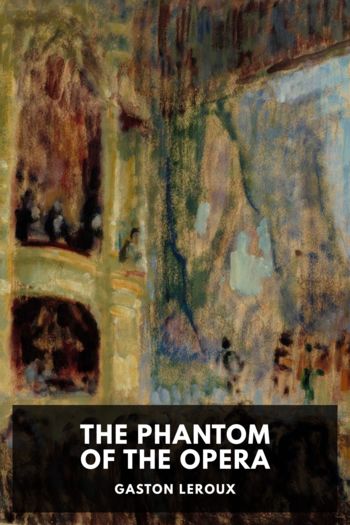The Banker Who Crushed His Diamonds Furquan Moharkan (books to read in your 20s .TXT) 📖

- Author: Furquan Moharkan
Book online «The Banker Who Crushed His Diamonds Furquan Moharkan (books to read in your 20s .TXT) 📖». Author Furquan Moharkan
But despite these hindrances, the bank’s share prices surged by 35 per cent within two hours of this announcement. The shares closed with a gain of 24 per cent, at Rs 70.45. The share prices of the bank were now two and a half times more than what they were at the beginning of the month, despite the markets witnessing a run on the bank. Why were the share prices surging? The continuous buying was happening by retail shareholders.
By the end of the December 2019 quarter, the shareholding pattern of the bank had completely changed. As discussed in the earlier chapters, the once all-powerful Rana Kapoor was now just a minority shareholder at the bank, owning a paltry 900 shares through a privately held firm by this three daughters. The Kapoor family, at the beginning of the quarter, had over 12 crore shares in YES Bank.
The majority shareholders at the bank now were the retail individual shareholders, who had 47.96 per cent shareholding in the bank, amounting to 120 crore shares. Three months ago, the retail investors had controlled just 29.84 per cent of the bank. The retail investors are mostly individual shareholders with share capital up to Rs 2 lakh.
During these months, as foreign portfolio investors, mutual funds and Rana Kapoor sold 51.9 crore shares in YES Bank, the retail investors picked up 46 crore of those shares, leaving them vulnerable to the biggest banking failure in India’s banking history. It won’t be a hyperbole to say that retail investors, who are the most vulnerable part in the melee called stock exchanges, picked up dimes marketed as ‘diamonds’ by the owners who sold them.
In the following three figures, I will try to graphically explain the level of churning the ownership at YES Bank witnessed in the last nine months of 2019.
But for now back to the bank’s fund-raising plans. The announcement on 31 October got people guessing in the markets. Everyone I spoke to back then was keen on guessing who the investor was. Many who had dealt with Rana said that they wouldn’t be surprised if Rana himself was doing this through some off-shore entity. While the markets were busy doing this, on 19 November the bank reported divergence in bad loans worth Rs 2018 crore. ‘The bank would like to clarify that the incremental gross NPA of Rs 2018 crore is across four accounts, of which exposure of Rs 1041 crore across three accounts was internally rated and disclosed as “BB & Below” as on September 30, 2019,’ it informed the exchanges.
Figure 1:
Source: Company Filings
Figure 2:
Source: Company Filings
Figure 3:
Source: Company Filings
The next day, on 20 November, the bank called a meeting of its board on 29 November to discuss fund-raising. On 29 November, the bank announced the name of the mysterious ‘global investor’ as Canadian investor Erwin Singh Braich and SPGP Holdings. ‘Discussions with investor ongoing and expected to be concluded shortly, the meantime the Binding Term Sheet extended till December 31, 2019,’ the bank said in that filing.
The bank also said that an unnamed ‘Top Tier US Fund House’ was willing to invest in it. Other than that, Citax Holdings Ltd and Citax Investment Group were also expressing interest in the bank. The bank, however, didn’t take any decision in this meeting.
In that meeting, the bank committed to finalizing a fund-raising plan by 10 December. ‘The board of directors shall reconvene on December 10, 2019 to finalize and approve the details of the preferential allotment and convene an extraordinary general meeting subsequently, to obtain the approval of the shareholders. Such preferential allotment shall be subject to receipt of all regulatory and statutory approvals, as may be applicable,’ it informed the exchanges.
Now who was Erwin Singh Braich who was willing to risk so much money on a bank that was collapsing? According to a Bloomberg report on 2 December, Braich was based out of Canada and was involved in many bankruptcy suits with creditors and family members. ‘In 1999, Braich was petitioned into bankruptcy by unidentified creditors and declared zero assets, according to bankruptcy records. KPMG, the trustee, estimated his liabilities at more than C$20 million ($15.1 million), a figure Braich has hotly contested, court documents show. It took four years for creditors to recover C$60,000 in cash and shares, and a decade to discharge the bankruptcy, according to court filings and bankruptcy records,’ the report said.
However, the bank’s then management, from the interviews I have conducted through the course of this book, revealed that they didn’t take these allegations seriously. ‘There was talk about his bankruptcy and failing marriage,’ said a top executive from the bank, who was at the centre of things.
SPGP Holdings, meanwhile, was based out of Hong Kong and is still a mystery. At a time when many bankers that I spoke to still fear that it is a front for a powerful politician from India, the whereabouts of the company remain unknown. The bank’s former management claims it to be an entity owned by Braich.
Two different directors of the bank, who attended that call, confessed that no binding term sheet was provided to them. One of them, Uttam Prakash Agarwal, also went public about it. ‘We were not given any binding term sheet. We were only told verbally,’ another director vetted Agarwal’s claim, though he didn’t wish to be named.
Now who was the merchant banker who had brokered a deal with such shady entities? It seemed like Rana Kapoor was trying to wrestle control over the bank. ‘The deal was brokered by Rana Kapoor himself. That is what the feeling inside the bank





Comments (0)